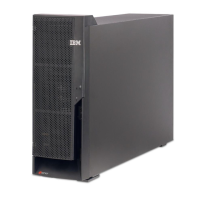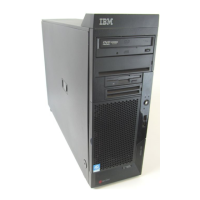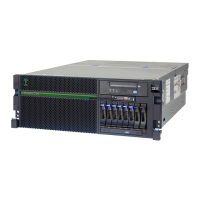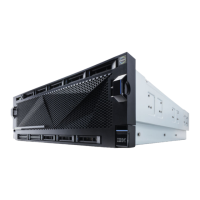iSeries architecture: Fundamental strength of the IBM ^ i5 and iSeries 27
Draft Document for Review October 18, 2004 5486AdvTech.fm
Clustering with switchable DASD and IASP
i5/OS, OS/400 V5R2 and V5R1 with HSL OptiConnect provide switchable disk
capability between two servers. V5R2 or higher allows three systems on an HSL
loop. IASPs and switched disk clusters provide the ability to access content on a
set of disk units from a second system. Support for both planned and unplanned
outages is improved when the system currently using a switchable disk
experiences an outage. Operations are continued on a system even when an
isolated controller or disk unit fails.
Data availability is improved with IASPs or switched disk clustering. Upon an
outage within a cluster, users can be switched to an alternate node in the cluster
(another iSeries server). Integrated file system (IFS) data and operating system
library objects residing in an IASP can be switched to another iSeries server
without an IPL. This enables one iSeries to take over data and an I/O controller in
a disk tower from another iSeries.
The primary function in the early stages of clustering is to offer coverage for
planned upgrades and maintenance on the production system without affecting
users accessing data from the switched disk towers, for the user-defined file
system (UDFS) only. Cluster management middleware, shipped as part of
OS/400 option 41 (HA Switchable Resources), manages the switchover. For high
availability purposes, it ensures that no two systems access the disks (data) at
the same time.
A properly designed switched disk cluster can offer advantages over a data
replication cluster. Because a switched disk cluster does not use data replication,
there is less overhead on the systems and, therefore, more resource available to
process transactions. A switched disk cluster can be simpler to operate. The
application is critical to the design of a true continuously available environment.
Domino takes advantage of this support and uses the switched disk architecture
to enable clustering. Switched disks do not remove the requirement to have
application resiliency.
Cross-site mirroring
Cross-site mirroring (XSM), sometimes called geographic mirroring, enables
you to mirror data on disks at sites that can be separated by a significant
geographic distance. You use this technology to extend the functionality of a
device cluster resource group (CRG) beyond the limits of physical component
connection.
Geographic mirroring provides the ability to replicate changes made to the
production copy of an independent disk pool to a mirror copy of that independent
